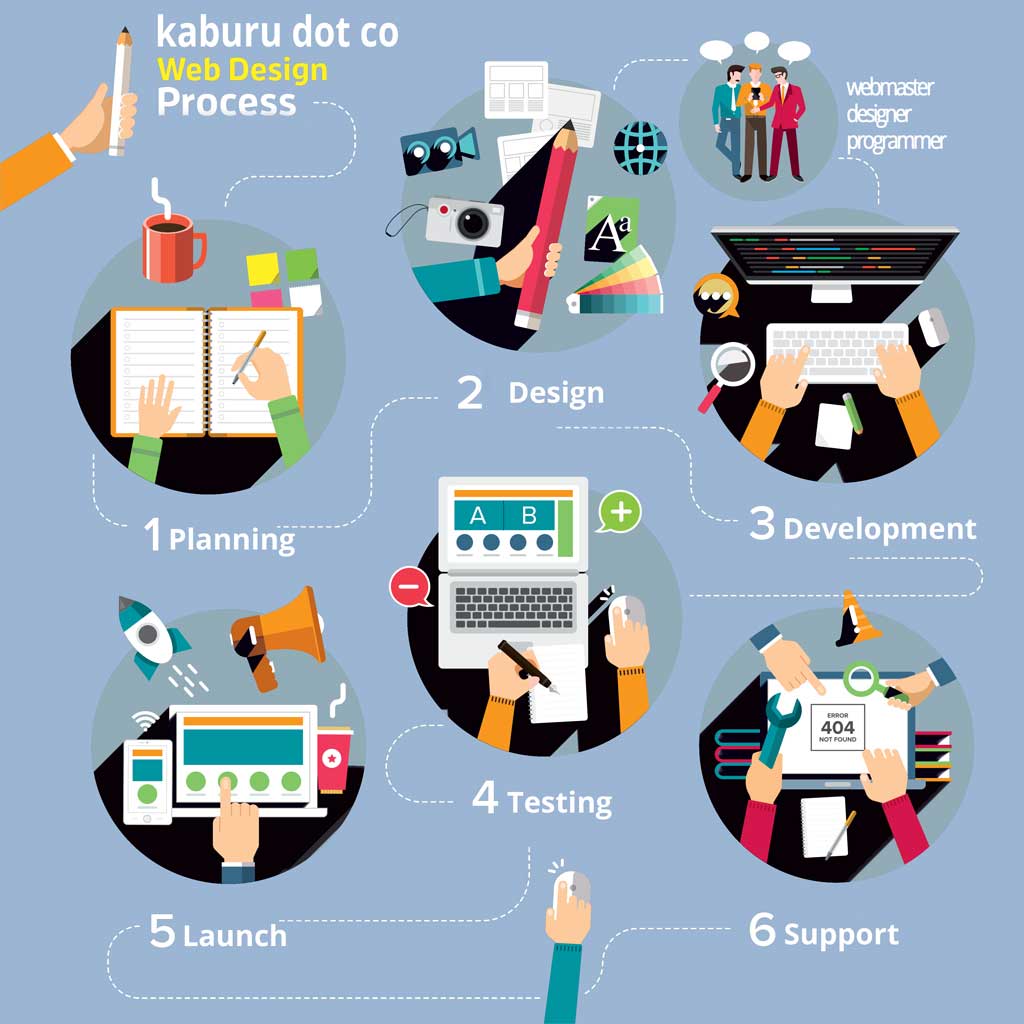Creating a successful website requires research and careful planning to make it not only visually attractive to prospective customers but a magnet to which search engines are drawn. Here at Kaburu, we aim to make the entire process as pain-free and simple as possible.

1. Planning
The strategy is the key to success. We ask our clients questions to ensure we identify the scope and scale of the project. Knowing the goals set by our clients, the age, and gender of the anticipated target audience, and the range and style of product to be marketed, we produce a development timeline. From this blueprint, we plan a site map and wireframes and determine the best website navigation system, ready for the next stage.
2. Design
Promoting the brand is an all-important factor in website design for businesses. Brand perception alone can increase site traffic, so a distinctive logo and colour scheme need to be established to appeal to the target audience. In consultation with the client, our designers will build and integrate a skeleton website, ready for the development phase.
3. Development
The aim at the development stage is to maximise the functionality of the website by filling in the body of the skeleton. This is achieved by building the HTML and CSS aspects within the website to increase access to as wide an audience as possible. Any previous web material for the client can be refined at this stage and added to new content, together with videos, slideshows, graphics and podcasts, if needed.
4. Testing
This is the critical phase, where the embryonic website is uploaded on to an internal production server prior to being launched. Any issues which arise at this stage can be addressed, with coding checked to ensure full functionality across major web browsers, such as Internet Explorer, Safari, Chrome, Opera, and Firefox. The ability to access the website on multiple devices is also checked.
5. Launch
At this stage, the website is deemed fully functional, with all files ready for uploading on to the server. The client’s domain name is registered and web hosting facilities are in place. Plugins to enable WordPress and SEO functionality are installed, and a final review is undertaken just prior to launch. The website is now live and it is time to implement a maintenance schedule.
6. Support
The internet is not a static entity: it is dynamic and changing constantly. Websites need regular maintenance to maximise SEO. Adding new and revising old content, installing additional plugins and regular upgrading is needed to maintain high search engine rankings.
We can implement a maintenance schedule on your behalf, leaving you to enjoy the benefits of a successful website, designed by the experts from Kaburu.

